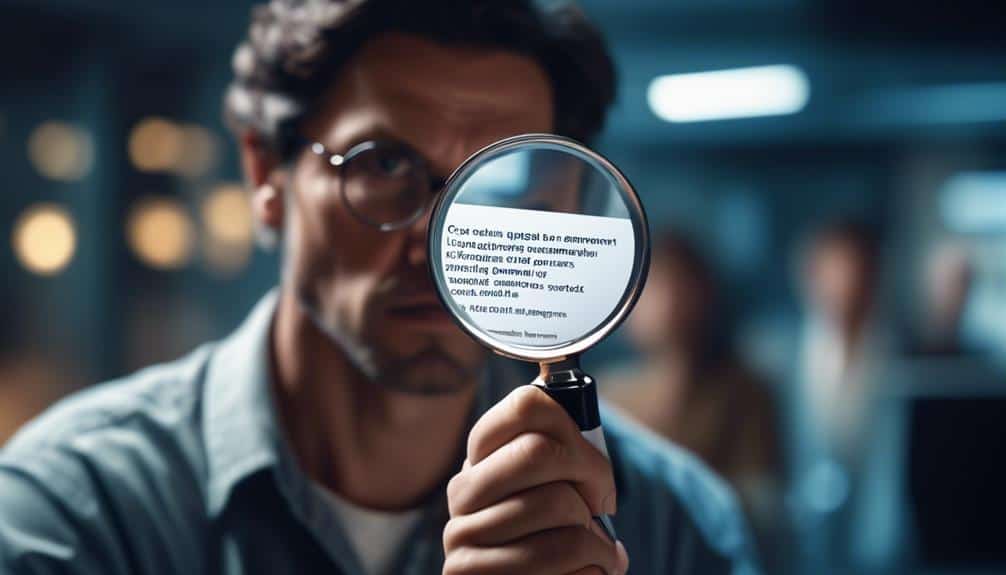Navigating the World of Stock Photography: A User’s Guide to Rights and Licenses
As you set sail into the vast sea of stock photography, each image can be a beacon guiding your creative endeavors. Understanding the intricate web of rights and licenses surrounding these digital assets is crucial for your journey.
From deciphering the nuances of licensing options to navigating the choppy waters of copyright disputes, a steady hand and a keen eye are essential tools in your arsenal.
Stay tuned to unravel the mysteries and master the art of utilizing stock photography to its fullest potential.
Key Takeaways
- Understand the distinction between royalty-free and rights-managed licensing options to make informed choices.
- Prioritize selecting high-quality, authentic, and relevant images that resonate with the intended emotion and audience.
- Ensure compliance with copyright laws, fair use guidelines, and licensing agreements to avoid legal issues.
- Maximize commercial use through creative enhancements while negotiating favorable licensing terms and understanding pricing differences.
Understanding Stock Photography Basics

Understanding the basics of stock photography involves grasping the key principles behind licensing and usage rights. When it comes to pricing models, stock photography typically offers two main options: royalty-free and rights-managed. Royalty-free images allow for unlimited use after a one-time purchase, while rights-managed images come with specific usage rights and restrictions. It's crucial to understand these distinctions to avoid any legal issues down the line.
In addition to licensing, image quality is another essential aspect to consider. Stock photos come in various resolutions and sizes, catering to different needs and budgets. High-quality images are ideal for projects requiring sharpness and detail, while lower resolution images are suitable for web use or smaller prints. Evaluating the intended use of the image can help determine the appropriate quality needed.
Different Types of Licenses Available
Curious about the different types of licenses available for stock photography? When it comes to licensing stock images, there are various options to consider. Firstly, it's essential to compare the different types of licenses available to understand which best suits your needs. Some licenses may allow for more extensive usage of the images, while others may have restrictions.
Pricing options also vary depending on the type of license you choose. Some licenses may be more budget-friendly but come with limitations on usage, whereas others may be pricier but offer more flexibility in how you can use the images.
Additionally, you may come across opportunities for extended usage beyond the standard licensing terms. Custom agreements can be negotiated for unique projects that require specific rights not covered by standard licenses. These custom agreements often involve direct discussions with the stock agency or photographer to tailor the license to your exact requirements.
When exploring stock photography for your projects, understanding the different license types and their implications can help you make informed decisions that align with your needs and budget.
How to Choose the Right Images

To make informed decisions about selecting the right images for your projects, it's crucial to consider how different types of licenses available for stock photography align with your specific needs and budget. When embarking on the image selection process, keep in mind the following to ensure your visual content curation is on point:
- Emotion: Choose images that evoke the feelings you want to convey in your project, whether it's joy, inspiration, or nostalgia.
- Authenticity: Look for images that feel genuine and real to connect with your audience on a deeper level.
- Relevance: Ensure the images you select are relevant to your message or brand to maintain consistency and clarity.
- Quality: Opt for high-resolution images that are sharp and well-composed to enhance the overall look of your project.
- Uniqueness: Seek out images that are distinctive and stand out to make your project memorable and impactful.
Legal Implications of Using Stock Photos
When using stock photos, it's essential to be aware of the legal implications to ensure compliance with copyright laws and licensing agreements. Fair use considerations are crucial when using stock images. Fair use allows for limited use of copyrighted material without the need for permission from the rights holder, typically for purposes such as criticism, commentary, news reporting, teaching, scholarship, or research. However, it's important to understand the specific guidelines around fair use to avoid infringement.
Additionally, understanding public domain exceptions is key. Public domain images aren't protected by copyright and can be used freely for any purpose. However, not all images labeled as 'public domain' truly are, so verifying the source and ensuring the image is genuinely in the public domain is vital to avoid legal issues.
Tips for Properly Crediting Photographers

When using stock photos, remember the importance of crediting the photographers who created the images. Be sure to use proper citation formats, acknowledging the creative contributions of the photographers.
Properly crediting photographers not only respects their work but also helps maintain ethical standards in the use of stock photography.
Photographer Attribution Importance
Properly crediting photographers is crucial when using stock photography to ensure compliance with licensing agreements. Acknowledging the photographer's contribution not only shows respect for their work but also helps build a community of recognition and support. Here are some tips for properly crediting photographers:
- Give Credit Where It's Due: Acknowledge the photographer by including their name whenever possible.
- Show Appreciation: Express gratitude for their artistry and talent through proper attribution.
- Foster Connection: Connect with the photographer by tagging them on social media platforms when sharing their work.
- Encourage Creativity: Inspire others to create by highlighting the creators behind the lens.
- Support Artists: Help sustain the photography industry by recognizing and crediting the hard work of photographers.
Proper Citation Formats
To ensure proper recognition of photographers, it is essential to use the correct citation formats when crediting their work. When citing photographs in academic requirements or other contexts, adherence to specific citation formats is crucial. Below is a table outlining common citation formats for crediting photographers:
| Citation Style | Format | Example |
|---|---|---|
| APA | Last name, First initial | Smith, J. |
| MLA | Last name, First name | Smith, John |
| Chicago | First name Last name | John Smith |
| IEEE | Initial(s) Last name | J. Smith |
| Harvard | Last name, Initial(s) | Smith, J. |
Using the appropriate citation format ensures that photographers receive the recognition they deserve for their work.
Acknowledging Creative Contributions
Transitioning from the importance of proper citation formats in recognizing photographers, ensure photographers receive due credit by acknowledging their creative contributions through appropriate crediting methods. When acknowledging creative collaborations, remember the ethical responsibility of giving recognition.
To properly credit photographers, consider the following:
- Artistic Credit: Acknowledge the photographer's artistic vision and skill.
- Contributor Acknowledgment: Recognize the individual's unique contribution to the work.
- Clear Attribution: Provide clear and visible credit alongside the image.
- Honor Creative Input: Respect and appreciate the photographer's creative input.
- Transparent Recognition: Ensure transparency in crediting to foster a culture of respect and collaboration.
Avoiding Common Licensing Mistakes

When using stock photography, remember to properly attribute the image and understand any usage restrictions that may apply.
Failing to give proper credit or violating licensing terms can lead to legal issues and financial penalties.
Properly Attributing Image
Avoiding common licensing mistakes when attributing images is crucial for maintaining legal compliance and respecting the rights of photographers and content creators. When it comes to properly attributing images, follow these guidelines:
- Include the Photographer's Name: Always credit the photographer or content creator.
- Provide Source Link: Directly link back to the original source.
- Specify the License Type: Clearly state the type of license the image is under.
- Use Correct Format: Ensure the attribution is clear and easily visible.
- Seek Permission for Modifications: If you plan to modify the image, obtain permission beforehand.
Understanding Usage Restrictions
To ensure compliance with licensing agreements, it's essential to thoroughly understand the usage restrictions associated with stock photography. When using images for commercial projects, be mindful of the license terms that come with the digital content.
Usage restrictions can vary widely, from limitations on the number of times an image can be reproduced to constraints on the types of projects in which it can be used. Some licenses may restrict images from being used in products for resale or in certain industries.
Understanding these restrictions is crucial to avoid potential legal issues. Always review the license terms carefully before incorporating stock photography into your projects to ensure you're using the images in a manner that aligns with the agreed-upon terms.
Maximizing Commercial Use of Stock Photos
To make the most of your stock photos for commercial purposes, consider utilizing advanced editing techniques to enhance their impact and appeal. By diving into the realm of creative editing, you can transform ordinary stock images into captivating visual assets that resonate with your audience.
Here are some tips to help you maximize the commercial use of your stock photos:
- Experiment with color grading to evoke specific emotions and create a cohesive visual identity for your brand.
- Use overlays and textures to add depth and interest to your images, making them stand out from the competition.
- Incorporate text and graphics to tailor stock photos to your marketing strategies and convey your brand message effectively.
- Play with composition and cropping to highlight key elements and guide the viewer's eye towards important details.
- Explore different styles and filters to give your stock photos a unique and memorable look that aligns with your branding opportunities.
Harness the power of advanced editing techniques to unlock the full potential of your stock photos and elevate your commercial projects to new heights.
Renewing and Extending License Terms

When it comes to your stock photo license, understanding how to renew or extend its terms is crucial.
You'll benefit from learning about the process involved in extending or renewing your license.
It's also essential to be aware of the implications that may arise if your license expires.
License Term Extension
Extending the licensing term for stock photography allows users to maintain legal usage rights beyond the initial agreement period. When considering a license term extension, here are some key points to keep in mind:
- Negotiate Favorable Terms: Use this opportunity to renegotiate pricing and terms.
- Plan Ahead: Anticipate your future needs and ensure the extension aligns with your upcoming projects.
- Budget Wisely: Factor in any additional costs associated with extending the license.
- Review Restrictions: Check if there are any new restrictions or limitations with the extended term.
- Stay Compliant: Ensure you're complying with all licensing agreements to avoid any legal issues down the line.
Renewal Process Overview
As you navigate the process of renewing and extending license terms for stock photography, understanding the key steps involved is essential to ensuring continued legal usage rights. When it comes to renewing your license agreement, staying organized with renewal reminders can prevent accidental lapses in usage rights. Here's a simple overview to guide you through the renewal process:
| Renewal Process Overview | ||
|---|---|---|
| 1. Review License Terms | ||
| 2. Check Renewal Dates | ||
| 3. Submit Renewal Request |
Expired License Implications
To avoid any legal complications and ensure continuous access to stock photography, understanding the implications of an expired license is vital when renewing and extending license terms. When dealing with expiring rights and license renewal, consider the following:
- Risk of Copyright Infringement: Using images without a valid license can lead to legal issues.
- Loss of Usage Rights: Access to images may be revoked if the license expires.
- Impact on Projects: Expired licenses can disrupt ongoing projects.
- Renewal Options: Explore different renewal choices to maintain access.
- Extended License Benefits: Extending licenses can offer flexibility and peace of mind for future use.
Stay informed to enjoy the freedom of utilizing stock photography without restrictions.
Exploring Exclusive Vs. Non-Exclusive Rights

When considering stock photography rights, it's crucial to understand the distinction between exclusive and non-exclusive licenses. Exclusive partnerships grant one entity the sole right to use and distribute the image, limiting its availability elsewhere. On the other hand, non-exclusive agreements allow the image to be licensed to multiple users simultaneously, providing more flexibility.
To help illustrate the difference more clearly, here is a comparison table:
| Aspect | Exclusive Rights | Non-Exclusive Rights |
|---|---|---|
| Usage Restrictions | Sole right for one entity | Can be licensed to multiple users |
| Availability | Limited availability | Widespread availability |
| Pricing | Typically higher due to exclusivity | Lower prices due to shared usage |
| Flexibility | Limited flexibility in usage options | Increased flexibility in usage |
Understanding these distinctions can help you make informed decisions when selecting the type of license that best suits your needs. Whether you value exclusivity or flexibility, knowing the differences between exclusive and non-exclusive rights is key to navigating the world of stock photography effectively.
Resolving Copyright Disputes and Issues
In navigating copyright disputes and issues related to stock photography, clarity on ownership and usage rights is paramount. When facing challenges in this area, it's crucial to understand your rights and options. Here are some key points to consider:
- Fair Use Exceptions: Familiarize yourself with the concept of fair use and how it applies to the use of stock photography in your projects.
- Creative Commons Licenses: Explore the different types of Creative Commons licenses available and ensure you comply with their terms when using images.
- Consult Legal Resources: If unsure about your rights or facing a copyright dispute, seek guidance from legal resources specializing in intellectual property.
- Negotiate Amicably: When dealing with copyright issues, strive to resolve them amicably through communication and negotiation with the involved parties.
- Document Everything: Keep detailed records of licenses, permissions, and communications regarding the use of stock photos to protect yourself in case of disputes.
Frequently Asked Questions
Can I Use Stock Photos for My Personal Social Media Accounts or Do I Need a Commercial License?
You can use stock photos on your personal social media accounts without a commercial license. Just make sure it's for personal use and not for promoting a business or making money. Enjoy sharing!
How Can I Tell if a Stock Photo Has Been Heavily Edited or Manipulated?
To identify manipulation in a stock photo, look for inconsistencies in lighting, shadows, and proportions. Check for unnatural blur or sharpness levels. Authenticity verification can involve reverse image searches or consulting metadata for clues. Trust your instincts.
Are There Any Restrictions on Using Stock Photos in Merchandise or Products for Sale?
When using stock photos for commercial products, be aware of usage restrictions. Some images may have limitations on merchandise usage. Always check the licensing terms to ensure compliance and avoid any potential legal issues.
You can share your stock photo license with others unless explicitly stated otherwise. However, transferring it to another party might not always be allowed. Check the licensing terms to ensure you have the sharing rights you need.
What Steps Should I Take if I Accidentally Use a Stock Photo Without the Proper License or Permission?
If you accidentally use a stock photo without the right license, seek compensation for the error. Legal consequences may arise, but promptly addressing the issue can mitigate potential risks and resolve the situation effectively.
Conclusion
In conclusion, navigating the world of stock photography can be complex, but understanding the basics of rights and licenses is essential.
By choosing the right images, properly crediting photographers, and maximizing commercial use, you can make the most of your stock photo investments.
Remember to renew and extend license terms as needed, and be aware of the legal implications to avoid copyright disputes.
With the right knowledge and approach, you can effectively utilize stock photos in your projects.








